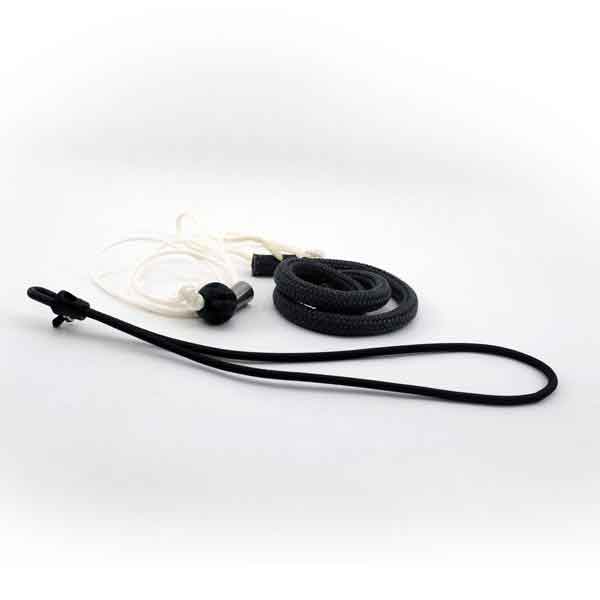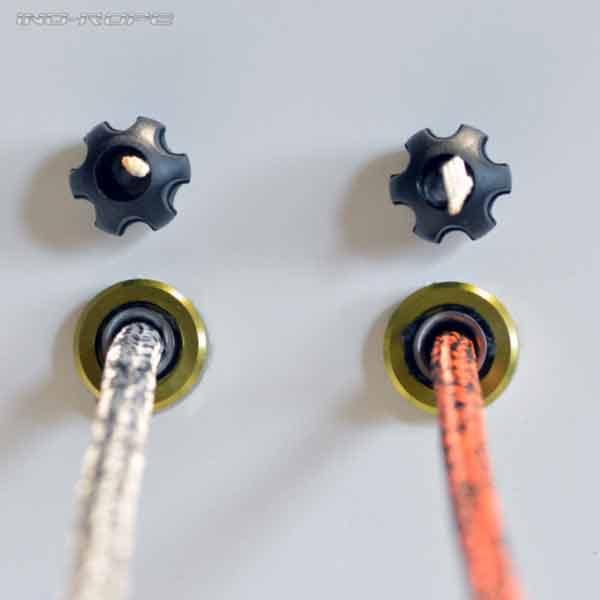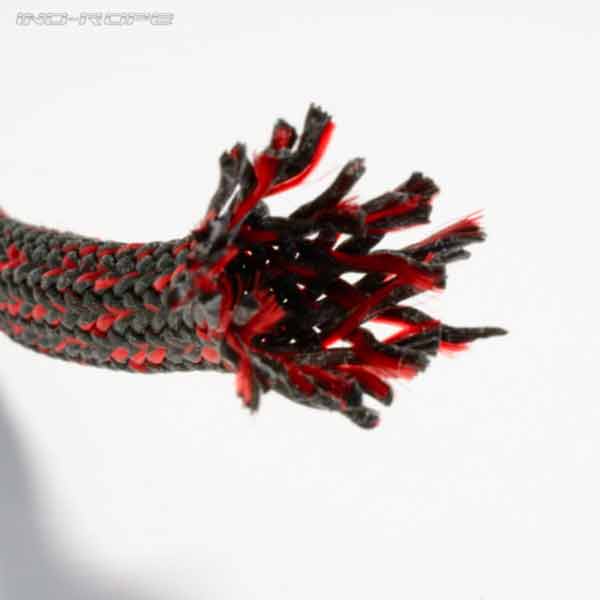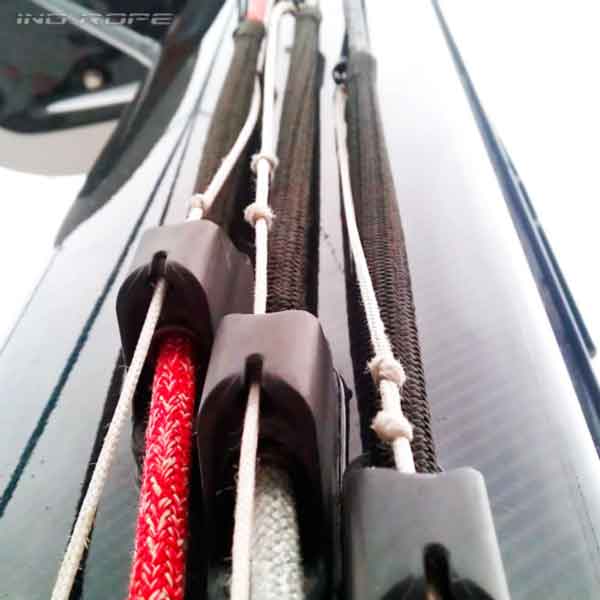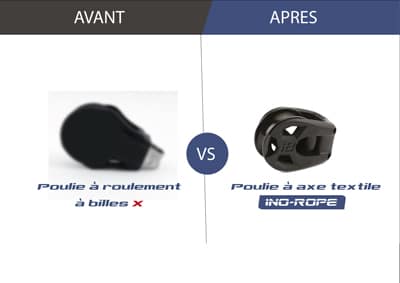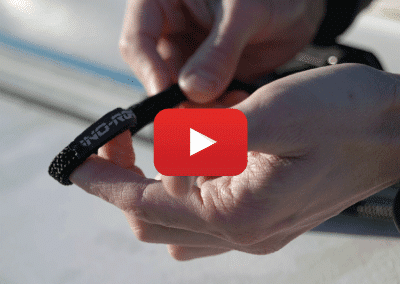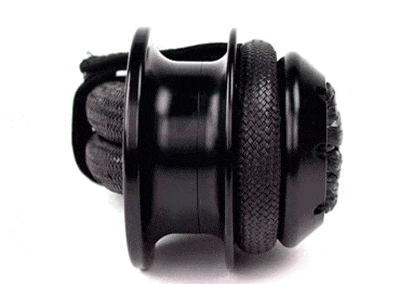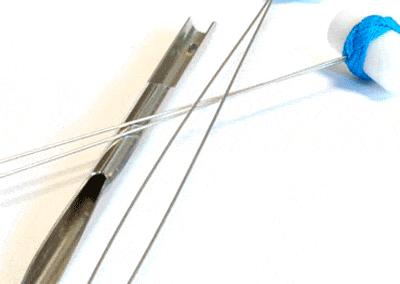
Constrictor textile clutches: the best solution for your ropes !

The anatomy of a Constrictor textile clutch
The Constrictor textile clutch is composed of a base plate, a cover, a lanyard and an elastic:

1-The aluminium base-plate
The base plate, made of aluminium, is the only metal part of the Constrictor textile clutch. It is the base that is fixed on the deck, in the place of a standard clutch.
2-The Technora® cover
It is the cover that acts as a clutch by constricting the rope, according to the principle of constriction. When empty, it measures about fifty centimetres. However, in order to prevent the rope from slipping or melting, the textile clutch cover is made of Technora®. It is an Aramid fibre with a high friction coefficient which is highly heat-resistant (up to 450 °C!).
3-Opening trigger system
Also called lanyard, the control lanyard ending with a plastic ball enables “the release” of the clutch by releasing the tension of the sleeve. Thus, by positioning the stopper knot in the notch of the base unit, the Constrictor textile clutch can be maintained in the open position.
4-The elastic retainer
Like the captain, the retaining bungee has a hook to fix on a deck fitting, at the front of the clutch. The tension exerted on the sleeve maintains it in position so that the constriction effect functions correctly.
In order to pass the rope through the textile clutch, tape it along the last 10 cm, tightening it well, and insert it into the sleeve.
The (numerous) advantages of the textile clutch
The Constrictor textile clutch is a much more efficient solution than conventional clutches, for multiple reasons that we are pleased to list:

Light weight
Conventional clutches’ weakness is that they are really heavy. The textile clutch provides unpaired lightness. The small base plate is the only metal part of the system. On a racing sailing boat, installing textile clutches enables weight-saving of several kilos!
Performance
The grip of the Constrictor textile clutch is simply excellent, compared to standard clutches where the pressure is exerted on a very small surface. The constriction effect, exerted on a significant length and on 100% of the rope’s surface (all around it), avoids any slipping.
Reliability
The textile Constrictor clutch can easily withstand several tons of load over very long periods. From Mini 6.50 to IMOCA 60s and the Maxi Multihulls, the textile clutches can withstand very high loads with small rope diameters.
Lifespan
The textile clutch considerably increases the lifespan of ropes which are no longer subjected to crushing between two metal surfaces. The cover is no longer subjected to aggression when passing through the clutches: So, there is no need to put on a chafe sleeve!
Cost-saving
Because the Constrictor textile clutch has excellent holding power, installing it is cost effective, as it reduces the diameter of the rope. It is less costly to purchase a Constrictor textile clutch and a new halyard with an inferior diameter than to purchase a new halyard of the same diameter on which chafe sleeves will also have to be fitted.
Easy use
No matter the load that the rope undergoes, the textile clutch remains easy to “release” without having to use a winch to decrease the tension. In case of trouble, for example, you can drop the spinnaker, as an emergency measure. It is possible to manoeuvre the clutch remotely by installing a control lanyard. It can be installed on the mast foot or on the masthead, to replace the hook on the mainsail.
Easy mounting
The slotted hole on the base enables the Constrictor textile clutch to be positioned on the drilled holes of the previous clutch. So, it is not necessary to drill the deck again. However, you need about 80 cm of free length on the roof (50 cm of sleeve + 30 cm of elastic).
Easy maintenance
The maintenance of a Constrictor textile clutch only requires rinsing with fresh water. If the Technora® sleeve is not protected from UVs, it has to be replaced approximately every 5 years (it is easy to proceed with that operation oneself). The spare parts, distributed by Cousin, are available all over the world.
Technora® is a UV sensitive fibre. To increase the sleeve’s lifespan, protect it from UV exposure under a double deck surface..
Vous pouvez accéder directement à la vidéo sur notre Youtube en cliquant ici.
| Référence | Diamètre du cordage (mm) | Charge de travail (kg) | Poids (g) | Longueur embase + gaine + tendeur (cm) | Longueur de la gaine (cm) | Longueur (L) de l’embase (mm) | Largeur (l) de l’embase (mm) | Hauteur (H) de l’embase (mm) | Taille de l’entraxe min/max (mm) | Taille des vis (mm) |
|---|---|---|---|---|---|---|---|---|---|---|
| N°6 | 5 | 459 | 155 | 115 | 55 | 115 | 25 | 45 | 70/90 | 8 |
| 6 | 765 | |||||||||
| N°8 | 6 | 714 | 160 | 120 | 60 | 115 | 25 | 45 | 70/90 | 8 |
| 8 | 1173 | |||||||||
| N°10 | 8 | 1224 | 165 | 120 | 60 | 115 | 25 | 45 | 70/90 | 8 |
| 10 | 2856 | |||||||||
| N°12 | 10 | 1224 | 335 | 136 | 75 | 126 | 36 | 58 | 70/90 | 12 |
| 12 | 2856 | |||||||||
| N°14 | 12 | 1224 | 345 | 136 | 75 | 126 | 36 | 58 | 70/90 | |
| 14 | 2856 |
-
Constrictor | textile clutch replacement kit109,00 € – 126,00 €
-
Embeddable Constrictor textile clutch147,00 € – 168,00 €
-
Blended Technora® and polyester chafe sleeve3,17 € – 7,79 €
-
Constrictor textile clutches147,00 € – 168,00 €

